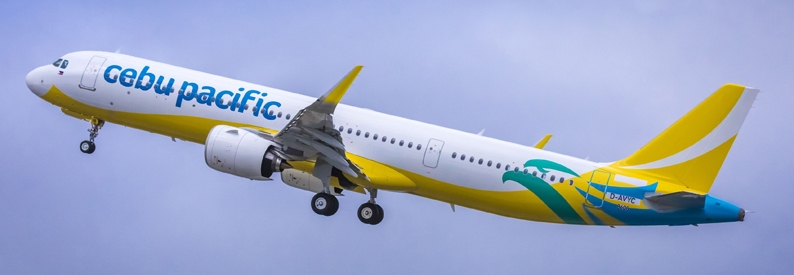Philippines Cebu Pacific Air holds course for all-neo fleet

Cebu Pacific Air (5J, Manila Ninoy Aquino Int’l) still plans to transition to an all-neo Airbus fleet by 2027, the only exception being the Philippine low-cost carrier’s ATR72 freighters, Mark Cezar, its new chief finance officer, said in an interview with the “People” section of its parent JG Summit Holdings’ website.
Cebu Pacific Air’s fleet plans have not changed despite the challenges posed by the pandemic, he added, and by 2027 it should have a fleet of around 90 to 100 aircraft. When the global health crisis hit, the carrier was in the midst of a major re-fleeting programme, a course it has now resumed, though timelines have been adjusted.
“In terms of maintaining a very modern and cost-efficient fleet, that’s still central to our business model. We still plan to transition to an all-Airbus neo fleet by 2027,” said Cezar, who joined the airline in 2007 and was its director for network planning for five years.
The one exception to this modern jet fleet will be regional unit Cebgo’s ATR72 turboprop freighters, which are essential to the airline’s network as they have the capability to land on shorter airstrips around the Philippines archipelago not serviceable by jet aircraft, he said.
According to the ch-aviation fleets advanced module, Cebu Pacific Air currently operates a fleet of twenty-one A320-200s, six A320-200Ns, seven A321-200s, and nine A321-200NXs, plus five A330-300 and two A330-900N widebodies. It has a further fifteen A320-200Ns, twelve A321-200NXs, ten A321-200NX(XLR)s, and thirteen A330neo on order from Airbus. Cebgo, meanwhile, operates two ATR72-500(F)s as well as six ATR72-500s and fourteen ATR72-600.
Cebu Pacific Air took delivery of its first of the sixteen A330neo last November, configured for up to 459 passengers in the world’s densest single-class layout. Cezar clarified that the tight configuration is optimised for the carrier’s short-haul international flights.
“It’s meant for three- to four-hour flight segments, like to Tokyo or Singapore Changi, that’s the core mission for that particular fleet.”
He added that the aircraft type is also flexible enough to take on medium-haul routes, such as Dubai Int’l – aiming at the substantial overseas Filipino worker market for whom affordability is a major concern – Sydney Kingsford Smith, and Melbourne Tullamarine.
